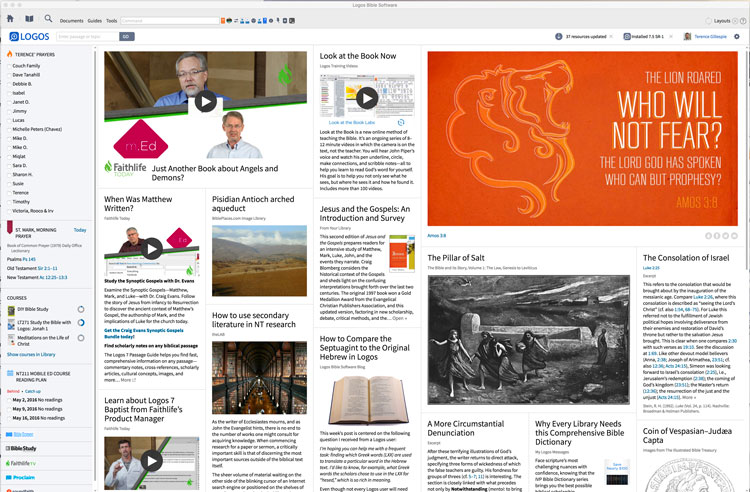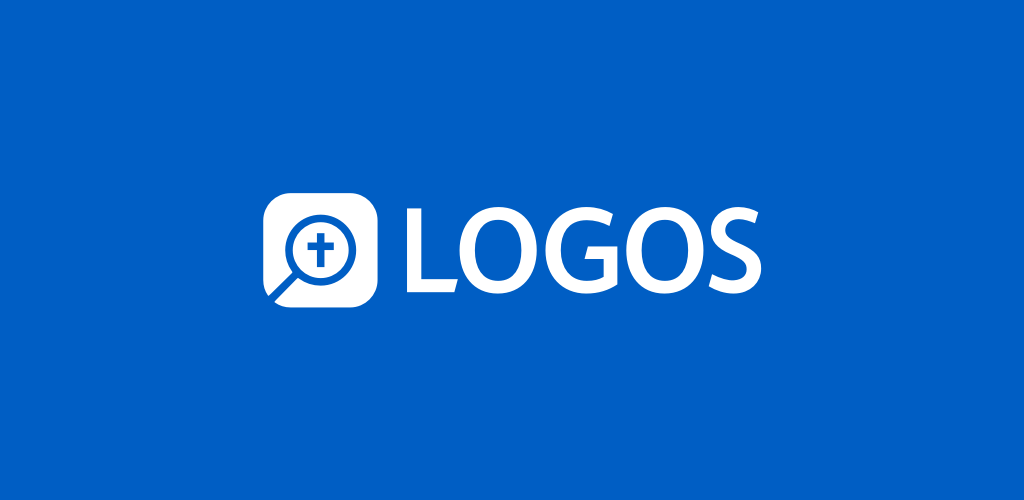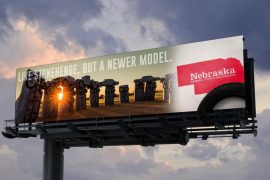One year ago, I took the plunge into Logos Bible software.
I’d seen it advertised for 10 years but never understood what it was. The hundreds of books in various collections were impressive, but so what? E-books and pdf’s are ubiquitous, nowadays, and I had a dozen Bibles and a hundred other books in Olive Tree, already.
Little did I know, it’s what Logos does with the books that makes all the difference. Every book is indexed and cross-linked with every other book in your library, as well as with powerful language tools. The result is the ability to see your whole library from as many vantage points as the books you have in it.
I wish my entire library was in the Logos format!
Mmm, that’s an interesting idea …
Could My Entire Library be in Logos?
Yes, of course it could. Much of my library is already in kindle; why couldn’t the same books be in Logos? It would be an enormous and ongoing challenge, of course. But I can’t think of a better company to do it.
There are 1575 books in my Logos library and about the same number on the shelf behind me. For space and research reasons, I no longer buy physical books. That’s why my kindle library is at 453 books and growing. Why not have all these books accessible from the Logos software “Engine”? Imagine the wonderful new tools and interactives that might be developed to view math, physics, and biology books!
Logos enables the import of books but they have to be in MS-Word format. No, thank you. Anyway, having the book in digital form is only the start of the work FaithLife does in cross-indexing books with the rest of the library.
Library with a Spiritual Core
For much of recorded history, the words Philosophy and Theology meant the same thing. Since I believe we are spiritual beings having a human experience, I find it natural to have a library (and viewing engine) built around a spiritual core. After all, the Bible was the first book run through a printing press. When you’ve got a large library to digitize, why not start there as Logos has done?
Pervasive Software
I’d like to say the software is central to my workday, but that doesn’t capture it. Logos is pervasive to my work and personal life. I may even use it continuously, depending on what I’m writing about.
Logos has a front page that resembles an online newspaper. For me, that front page has replaced the Drudge report as the first thing I read in the morning.

Other key features for me, are:
- All Bible/Theological resources are in one integrated app and synced on the computer, phone and tablet.
- Familiarity with Notes, Highlights, and Clippings has centralized prep for writing topics, group study, and presentations.
- Combined with Apple TV and the Logos mobile app, I can prepare for studies and presentations on the desktop and present from the tablet to be displayed to on any TV or Computer monitor.
- Prayer lists are synchronized across all devices.
- Forum interactions are displayed on the front page.
Perhaps you can see why I’d love to have my entire library in Logos format?!
Level’s and Packages
Though I care deeply about the true meaning of every passage, I am, to borrow a phrase from Mike Heiser, denominationally apathetic. C.S. Lewis would describe me as a mere Christian. I would argue that such makes me a Catholic, in the true universal sense of the word, but that’s a discussion for another day.
My mere Christianity left me baffled by the denominationally tiered packages offered by Logos. After analyzing each one, at great length and with the help of a seminarian, I went with the “standard” platinum package and then supplemented with the suggestions of a seminarian friend (Thank you, Dennis!).
At the time of purchase, Logos 6 was the latest. The upgrade to version 7 was free, and I also have a Logos Now subscription. I’m not exactly sure about all the benefits of the subscription, but I don’t think FaithLife is, either. They’re trying to figure out how to roll out functionality, quickly, and still remain profitable. Adobe addressed similar challenges with a subscription model, as well.
Training Path
Upon installation, I felt the inevitable overwhelm of the vast resources and tools that FaithLife has been working on since 1992. There’s no lack of Logos training available, but even that can become a source of overwhelm.
It took a year, but I’ve now gone through most of the training available. Even so, it was only last month that I started to feel a sense of competence. To achieve the same in three to six months, I’d recommend taking the training in this order:
- 30 Logos videos (Came with Base Package)
- View 2 videos a day of the free online pro training videos
- Mastering Logos by Danny Zacharias was fabulous (And includes Logos 7)!
- Logos Bible Software Training Manual, Volume 1-3 by Morris Proctor
- Logos Blog articles by Morris Proctor on Logos.com
- Logos Blog articles by Mark Ward and Steve Runge on Logos.com
- LT271 Study the Bible with Logos: Jonah 1 (Came with Base Package)
- DIY Bible Study course (Came with Base Package)
- Repeat.
LearnLogos.com by John Fallahee looks promising but I can’t vouch for it since I’ve not taken John’s courses. He has 40+ hours of Logos 7 training with 1000 videos.
Interactives, 3 of 36!
The Psalms Explorer
Timeline Interactive
Concordance Tool (Make a concordance out of ANY book in your Library!)
You can see them all on the Logos Pro Training page.
Life Applications
So far, I’ve written five articles for which Logos was a key resource. One of them required knowing every New Testament reference made of the Old Testament by both Paul and Jesus. The ability to gather knowledge like that was not possible before software like Logos came along.
The exegetical summaries provide an overview of most commentaries in one place. These enable me to objectively say things like, “Most commentaries refer to X” or “Commentaries are divided on Y”.
The reverse interlinears are the equivalent of light-speed language travel for the Greek and Hebrew handicapped.
The list goes on and on:
- What does the Bible say about X?
- What does this passage really mean?
- What did the church think it meant throughout history?
- What are the primary story arcs and their relationship with each other?
- Is this a reference to the Old Testament?
Missionary Work
A young couple in our church are thinking about doing missionary work in the Philippines. If they go, Logos on their laptop and tablets will enable them to travel and work without being anchored to the roomful of books they relied on in seminary.
The videos of their prospective outpost show people traveling for days, by jeep and moped, just to spend a few days with someone with a firm understanding of the Bible. Upon graduation, new pastors may, or may not, receive the treasure of a Bible, a dictionary, and a systematic theology book.
Imagine how the strategic placement of laptops and tablets with a Logos library would transform the renewal of minds in remote places in the world!
Already, but Not Yet!
As of the coming of Jesus, the Kingdom of God is already, but not yet fully, upon us. That’s a fitting metaphor for the way I feel about Logos Software. I’m already using it to great effect, but don’t yet fully understand the software and all it can do.
Given the work that FaithLife is doing to add ever more value and insight to the texts, I suspect the “already, but not yet” paradigm will describe my relationship with the software until Kingdom come!




